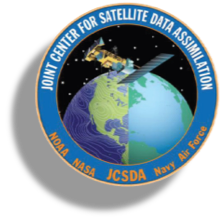At NASA’s Global Modeling and Assimilation Office (GMAO) weather prediction is as much an operational endeavor as a research one, with a NWP model run daily that produces forecasts for NASA customers and missions. The team that designs and runs that model is one of JCSDA’s integral partners, both providing input and putting JCSDA innovations like the JEDI unified data assimilation framework into operational practice.
For the last year, Ron Gelaro and his team at NASA have been going through all the observations currently assimilated into their system and making sure that the JEDI/UFO combo from JCSDA is producing the same results as their current model, matching all inputs and checking to make sure the outputs are a match as well. Once Gelaro and his team reproduce their current functionality, they can move on to all the advancements JEDI can bring to their system. “It’s a very critical phase of the process,” Gelaro says, made more difficult because the analysis and results aren’t binary; almost every observation that is kept by the quality control filters goes through even more quality checks after that, and depending on how well it passes is given a different weight by the model. They’ve now successfully achieved the same outputs with JEDI as with their current system and are ready to move on to the next step, where they begin varying the inputs. NASA plans to phase JEDI in slowly over the next couple years, with the goal of an operational system with key components based on JEDI within the year. Once that’s done the team is very excited to see what capabilities they can add to their model. One big component they’re excited about: integrating data assimilation for the land, ocean, cryosphere, and atmosphere. “The big push everyone is making is to move systems from exclusively weather prediction and atmospheric modeling to combine atmosphere models with land, ocean, ice, trace gas–a whole linked system,” Ron says. Currently models for each component are built entirely separately. With JEDI all of them will build from one common data assimilation method, and they can communicate with each other–the first step to the linked system models of the future. In addition, the joint nature of JEDI means anyone using it can pull from any other partner’s innovations, building off the same codebase for easy integration of new advancements.“[After integrating JEDI], we can start using all the exciting innovations JEDI offers us to advance the system in years ahead,” Gelaro says. “[Earth system models] that can communicate with each other–that’s the new frontier.”
Originally published in the July 14, 2023 UCP Newsletter
Photo by Tom Barrett on Unsplash

